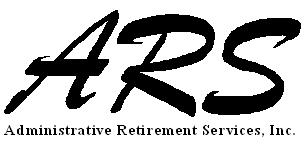Employers that sponsor retirement plans may make employer contributions to that plan that are tax deductible contingent on the timing of such contributions. Employer contributions can be in the form of profit sharing, safe harbor, cash balance or matching contributions. The rules surrounding the timing of these contributions, and the impact, are discussed below.
DEDUCTIBILITY
An employer may claim a tax deduction on its federal tax return for an employer contribution it makes to the company retirement plan. Employer contributions must be deposited by the filing due date of the employer’s federal tax return, including extension, in order for the deduction to count on that years return.
The due date of an employer’s federal tax return is based on the employer’s entity type. The due date for corporations (C or S) is two and a half months after year end. The federal tax return can be extended for six months after the return due date. For a calendar year employer, the tax return due date is March 15 and the return can be extended until September 15.
The due date for partnerships, LLCs and LLPs treated as partnerships for tax purposes is three and a half months after year end, or April 15 for a calendar year partnership. The federal tax return can be extended for five months after the return due date, or September 15 for a calendar year partnership.
The due date for a sole proprietor is three and a half months after year end. The federal tax return can be extended for six months after the return due date. For a calendar year sole proprietor, the tax return due date is April 15 and the return can be extended until October 15.
There is an exception to note for a sole proprietor. Their employer contributions to a defined benefit or a cash balance plan must be deposited by September 15, even though the extended due date is October 15.
There is an additional nuance to consider for employer contributions to a defined benefit or a cash balance plan, for all entity types. The employer contribution amount to a defined benefit or a cash balance plan can change based on the date the contribution is deposited. Plan sponsors that have a defined benefit or a cash balance plan should fully understand the ramification of the deposit rules for their particular plan each year.
TIMING
Employer contributions to a retirement plan may be made ongoing throughout the year, or once annually, in a lump sum after year end. Profit sharing, safe harbor non-elective and cash balance contributions are typically made in a lump sum after year end. Matching and safe harbor matching contributions are more commonly either made ongoing or in a lump sum after year end.
The timing of matching contributions is specifically identified in the plan document. The way the employer makes the matching contribution must agree with what is reflected in the plan document. If your company is making a matching contribution and you are unsure if the way you make it agrees with the plan document, please contact Administrative Retirement Services, Inc.
An advantage to making matching contributions ongoing is the election to not true-up the contribution after year end. The matching contribution is calculated on a per pay period basis and if an employee does not make level 401(k) contributions throughout the year, they may miss out on some matching contributions with the result being that the employer’s cost of providing a matching contribution is less. Safe harbor matching contributions that are made ongoing on a pay period basis are required to be deposit by the last day of the following quarter. For example, January matching contributions must be deposited by June 30 at the latest. Regular matching contributions made ongoing do not have this same timing requirement.
A disadvantage to making matching contribution ongoing is the administrative complexity. Matching contributions must be calculated and deposited multiple times throughout the year. This is in comparison to annual matching contributions, which are calculated and deposited only once, after year end.
PLAN YEAR IMPACT
The plan year an employer contribution applies to is determined by the date the employer contribution is deposited. This is very important as it impacts compliance with annual limits.
Annually plans have an Internal Revenue Code (IRC) section 404 and 415 limits.
The 404 limit is an annual deductible plan limit of 25% of eligible compensation. For 2012, an employee’s compensation is limited to $250,000. So if a company had total eligible wages of $750,000 and no employee earned more than $250,000, the 404 limit for this plan is $187,500.
The 2012 415 limit is an individual limit that applies to each eligible participant, which is the lesser of 100% of eligible wages or $50,000. If the eligible participant will attain the age of 50 during the plan year, a $5,500 401(k) catch up contribution also applies for a total 415 limit of $55,500 for 2012.
If employer contributions are deposited within 30 days after the federal tax return due date, these contributions will count toward the 404 and 415 limit for the prior year.
If employer contributions are deposited more than 30 days after the federal tax return due date, these contributions will count toward the 404 and 415 limit for the following year. If the employer contributions are deposited after the federal tax return due date, the 404 and 415 limit could need closer review and potentially be problematic. This is another reason why it is so important to timely deposit employer contributions.
If you have questions about the employer contributions deposit rules contact Administrative Retirement Services, Inc.

